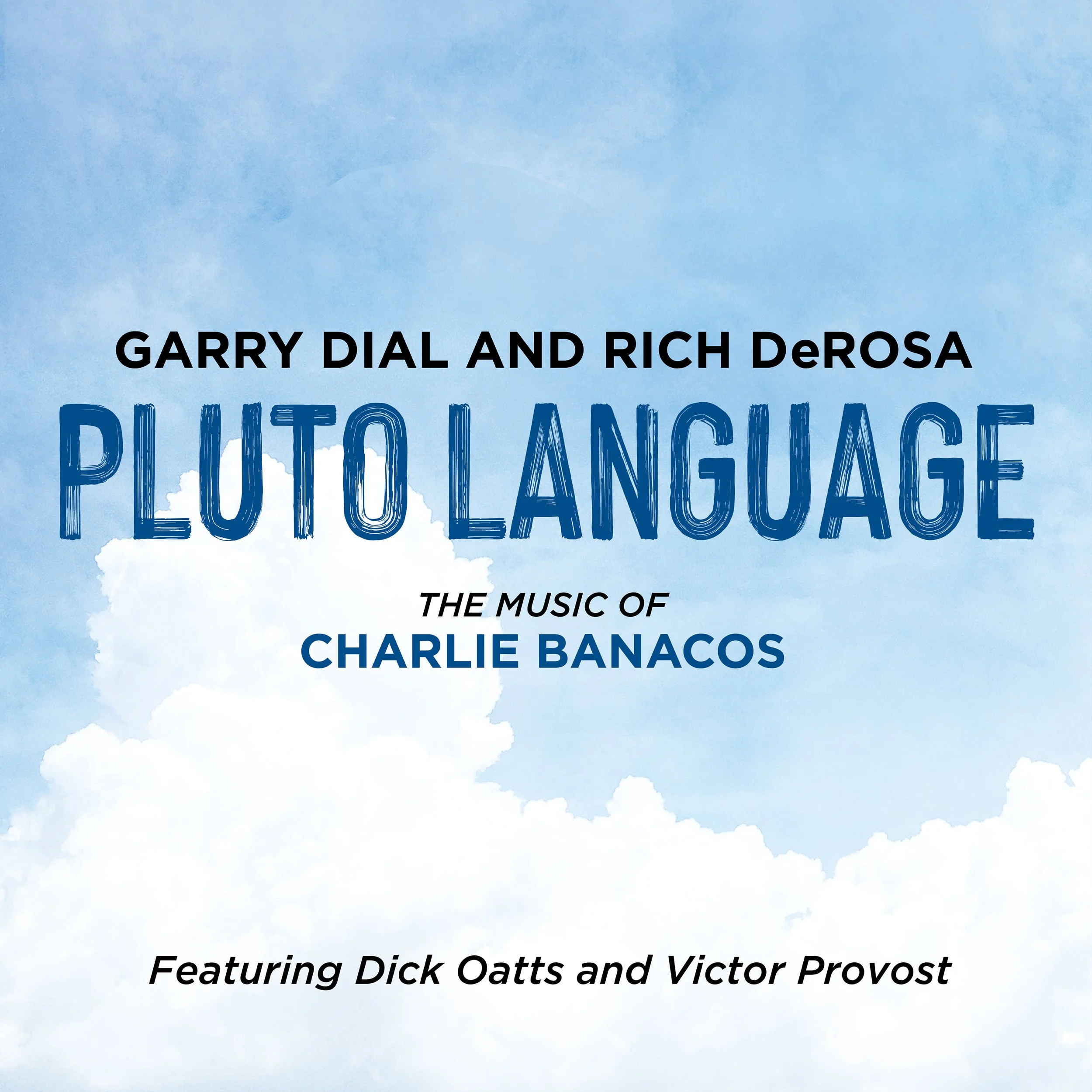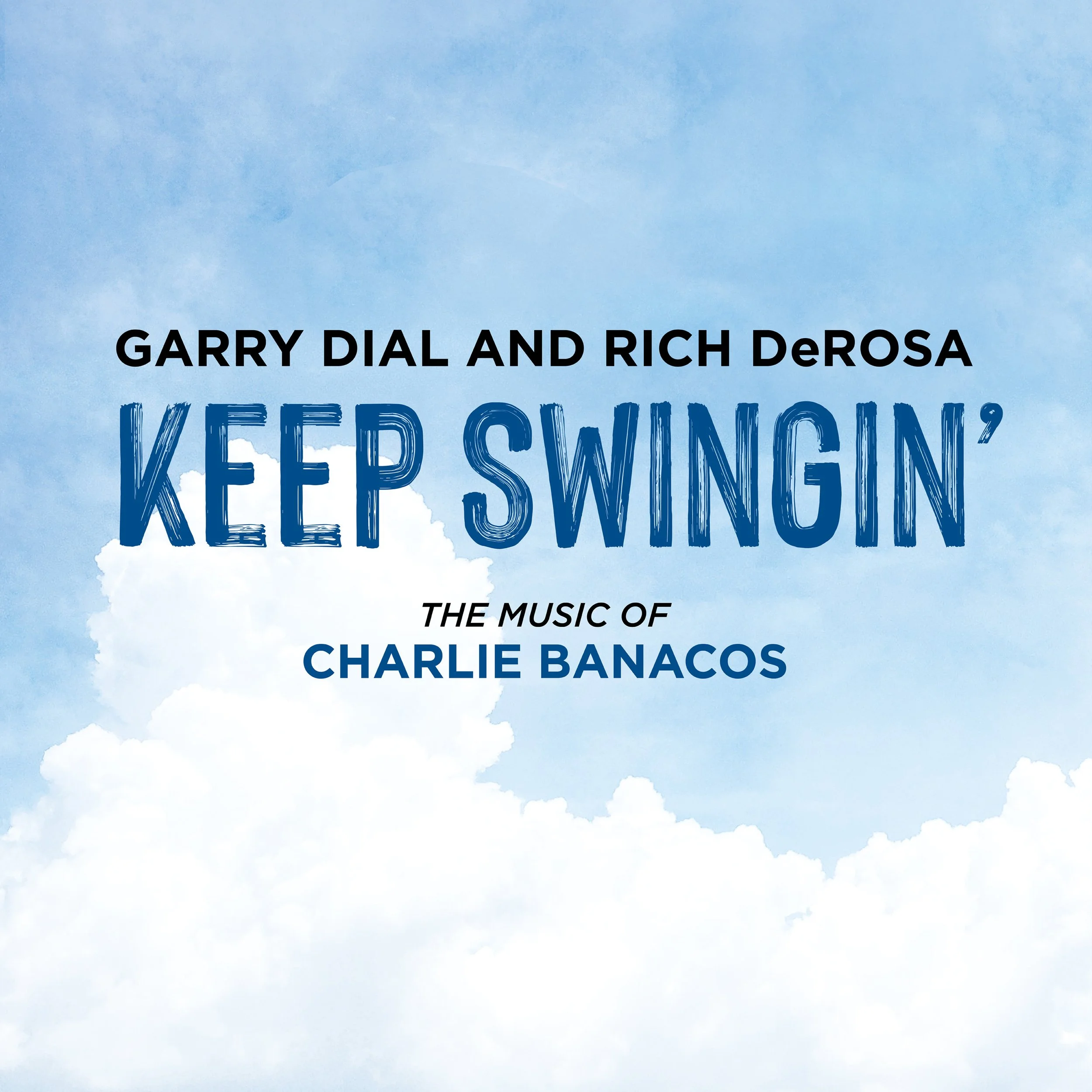Garry Dial and Rich DeRosa | Keep Swingin' | Album
Outside In Music is thrilled to announce the January 19, 2024 release of Keep Swingin’, a collaborative new project spearheaded by renowned pianist Garry Dial and stalwart arranger-drummer Rich DeRosa. Keep Swingin’ is a tribute to the great jazz educator Charlie Banacos, whose pedagogy has influenced legions of jazz musicians over the past 50 years. Keep Swingin’ will be released as a 10-track collection of Banacos’ music, reimagined and re-arranged by Dial and DeRosa. It is performed by some of Banacos’ most accomplished devotees,and friends including Mike Stern, Jeff Berlin, Jerry Bergonzi, Wayne Krantz, and many more. Complimenting the album is a stunning 100-page book of Charlie’s students’ personal anecdotes, photographs, artistic renderings, and more. The book features corresponding QR codes per tune, per chapter.
It’s no understatement to call Charlie Banacos a Jedi Master of jazz. He was a pianist, composer, author, and educator — but he was far more than the sum of those parts.
The visionary Banacos minted more than 100 courses of study for improvisation and composition, ranging from “Intervallics” to “Tetratonics” to “Superimpositions” to “Bitonal Pendulums” — all which became cornerstones of the jazz education lexicon. Over the years, his students and musical associates included leading lights from violinist Regina Carter to pianist Marilyn Crispell to guitarist Mike Stern.
Banacos’ counsel has been included in innumerable books, videos, clinics, lectures, and courses — at institutions ranging from Boston’s Berklee College of Music and New England Conservatory of Music to New York’s New School and Manhattan School of Music.
His students have gone on to record with Duke Ellington, Miles Davis, Chick Corea, Joe Henderson, Dizzy Gillespie—and many more. And among those under his tutelage and simply in the know, Banacos is a legendary figure — a practitioner and educator of utmost prudence, assiduity and insight.
“Dedicated teachers who interact with talented and diligent students ultimately cultivate the next generation of creators and teachers,” composer and arranger Rich DeRosa declares in Keep Swingin’ — a self-described “album of songs that’s also a book,” in tribute to Banacos and his legacy.
Garry Dial curated Keep Swingin’ along with arranger Rich DeRosa — and it turned out to be a lavish, multimedia tribute to this unquestionable titan. Both in print and on record, Keep Swingin’ features a handpicked selection of 10 Banacos tunes, from “Great Awakening” to “Bernie Burnola” to “Pluto Language.”
The album features a horn section consisting of trumpeter and flugelhornist Nick Marchione, alto saxophonist and flutist Andrew Gould, tenor saxophonist and flutist Chris Oatts, trombonist Ryan Keberle, and baritone saxophonist Gary Smulyan.
“There are nine different keyboardists, five bassists, five drummers, three guitarists, six saxophonists, three trumpeters, and three flute players,” Dial explains in the book. “Please keep in mind that each track is quite different because each artist is unique.” With that, he encourages the listener to soak in the program, where you hear “all these great jazz musicians being themselves.”
Keep Swingin’ kicks off with its title track, arranged by DeRosa and featuring Dial, alto saxophonist Dick Oatts, and trumpeter Terell Stafford.
“Rich and I decided to stay close to the exact form of the 12-bar blues — the notes, harmony and rhythm of Charlie’s original ‘Funky Blues,’” DeRosa writes. “The chart was written before we chose the soloists.” As he continues, Oatts and Stafford “were the perfect combination to bring the chart to life… this makes a great opener.”
Following “Keep Swingin’” is “The Great Awakening” — reimagined by electric bassist Joe Hubbard, who appears as a featured soloist alongside electric guitarist Wayne Krantz.
“Listen to Joe’s beautiful rubato introduction moving into an infectious deep funk pocket,” Dial writes. “This groove gives both Joe and Wayne the perfect backdrop to not only show their virtuosity, but also their melodic and imaginative storytelling.”
“The Bat Cave” features soloists in pianists Gerard D’Angelo, Garry Dial, baritone saxophonist Gary Smulyan, and drummer John Riley.
As Dial explained, D’Angelo introduced him to Gary Smulyan in his teens — and through a musical kinship, they became fast friends. As Dial wrote, Smulyan was playing alto at that time, but switched to the baritone in short order, and joined Woody Herman’s band.
“His unique voice from an early age has inspired generations of young up-and-coming saxophonists,” he asserts, adding: “I reimagined Charlie’s blues into a chart that would feature all three of us.”
As for “Pine Needles,” Dial shouts out the featured guitarist, the inimitable Mike Stern. “Besides being one of the greatest jazz guitarists of all time, Mike Stern is a most generous and warm-hearted person,” he writes. “I thank you, Mike, for being so gracious and for helping me continue the legacy of Charlie.”
“I reimagined Charlie’s blues into an even eighth tune to feature Mike,” he continues. “By transposing into a minor key, elongating phrases, adding some harmonic and melodic sections I was looking to capture a feeling of ‘Pine Needles’ in the fall of a New England day.”
“The Mummy’s Curse” demanded the talents of tenor saxophonist Jerry Bergonzi and his quintet: “Charlie loved Jerry Bergonzi. He spoke of him all the time. They came up together practicing and playing,” Dial writes. “Jerry has always been a hero to me, a great player, teacher and friend.” Rich arranged the 5 horns and rhythm section,” he continues, “adding just the right amount of figures and structure, yet giving the freedom to really hear the soloists.”
For “Bernie Burnola,” Dial reimagined Banacos’ blues as a 16-bar samba, and for “A-440,” “bass great Jeff Berlin arranged and added a highly personal interlude section to Charlie’s funky blues.
And within “Nero,” “I had fun elongating Charlie’s melody and adding new harmony that ultimately became a 28-bar form,” Dial adds. “The beauty of this melody was very inspiring to play.”
The bridge of “Pluto Language” utilizes a 3/4 rhythm called Mazouka (or Mazouk), a creolized version of the European Mazurka, adapted by enslaved Africans on the islands of Guadeloupe and Martinique.
““It took a little while to become comfortable with the exotically mesmerizing rhythmic ostinato pattern in Victor’s adaptation of Charlie’s blues,” DeRosa writes. “As the arranger for the horn section, I added new melodic lines to help the listener find the bar line a bit more easily.”
As for closer “Pelaghia,” “Charlie sketched out this two-piano classical piece and pinned the sketch as a storyboard on the walls of his office, lovingly known as ‘the bat cave’,” write Charlie’s wife and daughter, Margaret and Barbara Banacos.
Banacos died on Dec. 8, 2009, after a short bout with cancer. He was 63, By the end of this precious release, don’t let this score fade out — let it crescendo. Because as long as jazz lovers keep discovering Banacos, he’ll never die. What an eternal dictum, from a cloudscape on the cover, perhaps reflecting heaven: Keep Swingin’.
Tracklisting:
Keep Swingin’ (feat. Garry Dial, Terell Stafford and Dick Oatts)
Great Awakening (feat. Wayne Krantz and Joe Hubbard)
The Bat Cave (feat. Gerard D’Angelo, Garry Dial, Gary Smulyan and John Riley)
Pine Needles (feat. Mike Stern and Garry Dial)
Mummy’s Curse (feat. Jerry Bergonzi)
Bernie Burnola (feat. Helio Alves, Anne Drummond, Paulo Levi, Mauricio Zottarelli)
A-440 (feat. Jeff Berlin)
Nero (feat. Garry Dial and Jay Anderson)
Pluto Language (feat. Dick Oatts, Victor Provost, Anne Drummond, Mauricio Zottarelli)
Pelaghia (feat. Margaret and Barbara Banacos)








